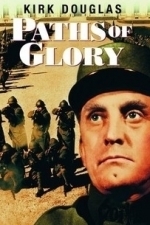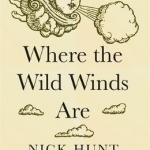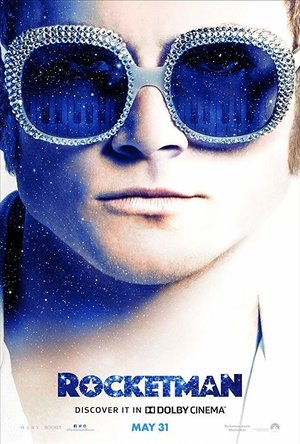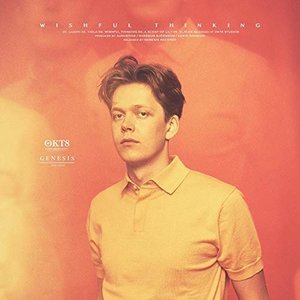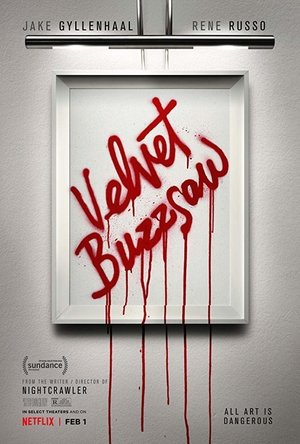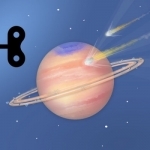
Space by Tinybop
Education and Reference
App
Boldly go where no kid has gone before in 3, 2, 1…. Liftoff! Travel into space to visit 8...
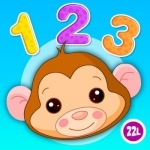
Baby games for 2 -4 year olds·
Education and Games
App
***** Parents‘ Choice Awards’ winner ***** Developed by an award-winning education studios,...
BankofMarquis (1832 KP) rated Paths of Glory (1957) in Movies
Feb 18, 2024
When Schary was fired by MGM, Kubrick went to Kirk Douglas (who liked THE KILLING as well and was anxious to work with Kubrick). Using his clout as one of the Major Stars of Hollywood at the time, Douglas got United Artists to agree to make the picture.
Starring Douglas, PATHS OF GLORY tells the WWI tale of a group of soldiers who mutiny when asked to take on a suicide mission to take the impregnable “ANTHILL”.
In this film, Kubrick starts to come into his own as a unique and visionary filmmaker who would insist on take after take until he got the exact shot he was looking for.
The highlight of the film is the 5 minute tracking shot of the troops attacking the Anthill, a tracking shot that films such as SAVING PRIVATE RYAN and 1917 owe a debt to. It is a masterclass of filmmaking from Kubrick.
As for Douglas – who was also used to having complete control of his films – PATHS OF GLORY was a battle of wills between Kubrick and Douglas with each man coming out on top (at times)…to the betterment of the film.
On the acting front, Douglas has never been better as the Commander of the unit that has the mutiny and who decides to defend the soldiers who are on trial for mutiny and cowardice and who quickly realizes that the trial is a sham and that there is no way for him these soldiers to get a fair trial.
Adolph Menjou (the 1937 version of A STAR IS BORN) and George Macready (GILDA) are appropriately blustery and out-of-touch as the Senior Officers who give (and then defend) their impossible orders. Richard Anderson (Oscar in the SIX MILLION DOLLAR MAN) is slimey and slippery as the prosecuting attorney (who knows that the outcome of the trial is a done-deal) while Ralph Meeker (THE DIRTY DOZEN), Joe Turkel (the bartender in THE SHINING) and Timothy Carey (who famously clashed with Kubrick during filming in a calculated attempt to get some publicity for himself and was subsequently fired from the film) are the unfortunate 3 who are put on trial as representatives of their troops while the outstanding performance in this film is fomer child actor Wayne Morris (KID GALAHAD) as drunken Lt. Roget.
Even though this film is about ½ war battle film and ½ a court-room drama, it is the visuals of the folly of war that will stick with the audience long after it is over…and stick with it it does as this film was selected for preservation in the United States Film Registry in 1992 and is still listed in IMDB’s TOP 100 Rated films.
Letter Grade A-
8 stars (out of 10) and you can take that to the Bank(ofMarquis)
Hazel (1853 KP) rated Where the Wild Winds are: Walking Europe's Winds from the Pennines to Provence in Books
Sep 26, 2017
From the moment the great storm of 1987 almost blew six-year-old Nick Hunt away, he has had the urge to travel. So many travel books are on the market, it is difficult to produce something new and exciting, but after coming across an interesting map of Europe, Hunt was determined to go on a journey that not many have attempted before. With a map listing the named winds of Europe, Hunt sets off on a quixotic quest to follow the winds.
Beginning in the Pennine Mountains, Nick Hunt takes the reader on a personal journey through the continent as he explores the towns and valleys the winds flow through whilst hoping the elusive tempests will occur so that he can experience them himself. With a mix of euphoria and disappointment, Hunt details his arduous journey providing additional knowledge along the way.
Some winds are more evanescent than others – one, discouragingly, not appearing at all – whereas one is so strong, Hunt witnesses a waterfall being blown upwards. Ignoring the warnings of the locals, Hunt, dead set on completing what he intended to do, takes us on a long walk from Italy to Croatia, a trek through the Alpine valleys of Switzerland, and a final expedition to the south of France.
Wind may seem like an odd topic to write a book about, but the Helm, Bora, Foehn and Mistral are no ordinary breezes. Their violence makes Hunt’s journey a dangerous and daring endeavour and is full of stories about past disasters that have occurred as a result of the strong, temperamental weather.
As well as teaching us about these four winds, Nick Hunt has collected facts and stories about the general areas he passes through. Personal stories of the inhabitants break up Hunt’s narrative, however, myths, legends, history and superstitions frequent the lengthy chapters as much as the winds themselves.
Giving wind a name provides it with a personality, as though it is something tangible that can be met and observed. Nick Hunt notes that artists such as Turner and Constable were interested in the weather and fascinated by the effects the wind had on the surrounding landscape. Another artist that was affected by the weather was Vincent Van Gogh - some of his paintings took place in France in the midst of the powerful Mistral. Just as the wind can be seen in his starry night skies, the scenery in France is evocative of a Van Gogh painting.
The winds do not only affect the lands they blow through, they have a strong impact on the wellbeing of the inhabitants. Some experience physical symptoms such as headaches, nose bleeds, dry skin and so forth, whereas others find themselves growing irritable, depressed and confused. The author himself has the opportunity to undergo the effects of these winds. Hunt also puts forward the suggestion that Van Gogh’s deteriorating mental health was a direct consequence of residing in the path of the Mistral.
From witchcraft to the Greek god Aeolus, there are a number of theories about why these strong winds blow. There are, of course, meteorological explanations, which Hunt attempts to explain, but admits he finds it as baffling as the next person. Regardless of the reason, these winds exist and it is captivating to learn about this aspect of Europe.
Where the Wild Winds Are: Walking Europe’s Winds from the Pennines to Provence is a fantastic, beautifully written book. Nick Hunt’s narrative is so personal that it becomes more than a travel documentation or informative non-fiction. As we read, we really get a sense of the emotions and physical hardship Hunt experienced, yet, at the same time, learn so much about European culture as well as, of course, Europe’s winds. Whether or not you are interested in travelling, this book will take you on a journey you will never forget.
Lee (2222 KP) rated Rocketman (2019) in Movies
May 22, 2019
The story begins with a middle-aged Elton (Taron Egerton), dressed in one of his trademark outrageous outfits (this time a winged devil costume, complete with horns!), as he marches into a group therapy session and informs everyone that he is addicted to cocaine, sex and prescription drugs. “For as long as I can remember I’ve hated myself” he continues, before starting to recall his childhood years. He sees his younger self across the room, looking at him as the first song begins. It's more like something out of a musical though, with both versions of Elton involved in the singing and dancing, not to mention the members of the therapy group too!
That therapy room is where much of the story is told, rejoining Elton at various stages of his recovery as he recounts the moments of his life that shaped him and brought him to the point he's at now. We initially join the younger version of Elton that we saw in the opening number, or Reggie Dwight as he was known back then, tinkling out his first few notes on the family piano and never feeling fully accepted by his family. His dad is uncaring and cold towards him, never once giving him the simple hug he craves, while his mum (brilliantly played by Bryce Dallas Howard) eventually proves herself to be not that much better than dad either as time goes on. Only Reggie's Nan seems to offer him any kind of support and encouragement, and it's not long before Reggie is receiving piano lessons, attending music school and playing small gigs in the local pubs.
Fast forward a few years to Elton as a young man (played by Egerton from now on), as he starts to get noticed by the right people in those pub gigs. He's paired with Bernie Taupin (Jamie Bell) where they form the partnership which will last a lifetime - Bernie providing the lyrics, Elton providing the music and the performance. They form a strong friendship, and it's fun to see them growing together as artists, revealing how such classic songs came from such simple beginnings. It's not long before Elton is on the fast track to becoming a global superstar, performing at the Troubadour club in LA where he immediately wows the audience. It's there that he catches the eye of John Reid (Richard Madden), who he starts a disastrous romantic relationship with, as well as taking him on as manager.
From there the movie becomes a rollercoaster ride of emotions, carried along by an outstanding, and I'd say Oscar worthy, performance from Egerton. Singing all of the songs, and portraying perfectly the highs and lows of Elton John's incredible career. As mentioned previously, he's also supported by what is an amazing cast, all sharing the singing duties. Familiar songs that give extra meaning and insight as they seamlessly integrate within the story. And they're also completely bonkers at times too! A song performed underwater, a song where everyone in the bar levitates off the ground, Elton firing up into the sky like a rocket and exploding like a firework! Despite all of this, the movie still manages to feel relatable and believable and is a real joy to watch.
From the moment the great storm of 1987 almost blew six-year-old Nick Hunt away, he has had the urge to travel. So many travel books are on the market, it is difficult to produce something new and exciting, but after coming across an interesting map of Europe, Hunt was determined to go on a journey that not many have attempted before. With a map listing the named winds of Europe, Hunt sets off on a quixotic quest to follow the winds.
Beginning in the Pennine Mountains, Nick Hunt takes the reader on a personal journey through the continent as he explores the towns and valleys the winds flow through whilst hoping the elusive tempests will occur so that he can experience them himself. With a mix of euphoria and disappointment, Hunt details his arduous journey providing additional knowledge along the way.
Some winds are more evanescent than others – one, discouragingly, not appearing at all – whereas one is so strong, Hunt witnesses a waterfall being blown upwards. Ignoring the warnings of the locals, Hunt, dead set on completing what he intended to do, takes us on a long walk from Italy to Croatia, a trek through the Alpine valleys of Switzerland, and a final expedition to the south of France.
Wind may seem like an odd topic to write a book about, but the Helm, Bora, Foehn and Mistral are no ordinary breezes. Their violence makes Hunt’s journey a dangerous and daring endeavour and is full of stories about past disasters that have occurred as a result of the strong, temperamental weather.
As well as teaching us about these four winds, Nick Hunt has collected facts and stories about the general areas he passes through. Personal stories of the inhabitants break up Hunt’s narrative, however, myths, legends, history and superstitions frequent the lengthy chapters as much as the winds themselves.
Giving wind a name provides it with a personality, as though it is something tangible that can be met and observed. Nick Hunt notes that artists such as Turner and Constable were interested in the weather and fascinated by the effects the wind had on the surrounding landscape. Another artist that was affected by the weather was Vincent Van Gogh - some of his paintings took place in France in the midst of the powerful Mistral. Just as the wind can be seen in his starry night skies, the scenery in France is evocative of a Van Gogh painting.
The winds do not only affect the lands they blow through, they have a strong impact on the wellbeing of the inhabitants. Some experience physical symptoms such as headaches, nose bleeds, dry skin and so forth, whereas others find themselves growing irritable, depressed and confused. The author himself has the opportunity to undergo the effects of these winds. Hunt also puts forward the suggestion that Van Gogh’s deteriorating mental health was a direct consequence of residing in the path of the Mistral.
From witchcraft to the Greek god Aeolus, there are a number of theories about why these strong winds blow. There are, of course, meteorological explanations, which Hunt attempts to explain, but admits he finds it as baffling as the next person. Regardless of the reason, these winds exist and it is captivating to learn about this aspect of Europe.
<i>Where the Wild Winds Are: Walking Europe’s Winds from the Pennines to Provence</i> is a fantastic, beautifully written book. Nick Hunt’s narrative is so personal that it becomes more than a travel documentation or informative non-fiction. As we read, we really get a sense of the emotions and physical hardship Hunt experienced, yet, at the same time, learn so much about European culture as well as, of course, Europe’s winds. Whether or not you are interested in travelling, this book will take you on a journey you will never forget.
Bong Mines Entertainment (15 KP) rated Wishful Thinking by Augustine in Music
Jun 17, 2019
“The first song I released as an artist that changed so much about my life. It’s a memory of the contrasts in a relationship, thinking that it’s a bit scary if the current moment is the highlight of your life. You are high on life but so afraid to lose the feeling that you somehow lose yourself instead.” – Augustine
‘Luzon’ is Augustine’s debut single. Shortly after its release, it skyrocketed to #1 on Hype Machine.
The likable tune contains a lighthearted storyline, beautiful falsetto vocals, and cinematic instrumentation flavored with an alternative-pop aroma.
Augustine – “Viola”
“I was a little angry with the world when I wrote ‘Viola’. Much of that anger was due to feelings of anxiety, guilt, and other boring things. The line ‘I’ll be your biggest disappointment if you sum up the years of adolescence’ is really about being scared of not being enough.” – Augustine
‘Viola’ contains a relatable narrative, likable vocals, and warm instrumentation pulsating with mellotron tones and distinctive drums.
Augustine – “Wishful Thinking”
“I’m weak for synth-pop songs that are so big that you just lose yourself in them. So I wanted to try one myself. ‘Wishful Thinking’ is a twisted love story about looking back at something with both regret and lack. But mostly with a fear of forgetting how a certain person is, looks and sounds.” – Augustine
The title track “Wishful Thinking” tells a twisted love story about looking back at something with both regret and lack. But mostly with a fear of forgetting how a certain person is, looks and sounds.
This reminiscence is juxtaposed with exhilarating energy which builds throughout the song, emulating a windows-down late night drive and overwhelming liberation.
‘Wishful Thinking’ contains a relatable storyline, pleasing vocals, and enjoyable instrumentation which takes listeners on a bombastic synth-pop thrill ride.
The likable tune reveals Augustine’s penchant for massive synth-based productions like Lana Del Rey‘s “Summertime Sadness” and Future Islands’ “Seasons”.
Augustine – “A Scent of Lily”
“This was initially an attempt to write a pop song, with inspiration from the chorus of Ariana Grande’s ‘Into You’. ‘Lily’ eventually became much more alternative. It’s about powerlessness in a relationship, when you buy into everything about the other person, to the point that you stop thinking your own sensible thoughts.” – Augustine
‘A Scent of Lily’ is another critically acclaimed tune which made Augustine one of 2019’s most talked about new artists.
Like “Luzon”, it peaked at #1 on Hype Machine. Also, it placed Augustine in a conversational comparison with iconic voices like Bon Iver, Mark Foster, James Blake, and Ezra Koenig.
‘A Scent of Lily’ contains a relatable storyline, ear-welcoming vocals, and lush instrumentation flavored with electro-pop and modern dance elements.
Augustine – “Slacks”
“The most personal song of the EP. It’s about how a lovely relationship didn’t last because of the distance. We moved to different cities, and I became so self-absorbed. I started suffering from agoraphobia that made it hard for me to even go outside. A little crazy in hindsight.” – Augustine
‘Slacks’ possesses a bittersweet storyline, heartfelt vocals, and stripped instrumentation perfumed with a nostalgic scent.
Get acquainted with Augustine’s “Wishful Thinking” EP by streaming it via Spotify.
“Hearing the EP from a distance, it became clear that this music grew out many years of me being afraid of being a disappointment to others. All the lyrics were inspired by being afraid of people, the world and leaving things behind.” – Augustine
All five songs featured on “Wishful Thinking” are collaborations between Augustine and producers Rassmus Björnson and Agrin Rahmani (LÉON, Skott).
https://www.bongminesentertainment.com/augustine-wishful-thinking/
Lucy Buglass (45 KP) rated Velvet Buzzsaw (2019) in Movies
Jun 20, 2019
The main issue I had with Velvet Buzzsaw is that the pacing is horrendously slow. The first 45 minutes felt like nothing but exposition, when it was a relatively simple concept for the audience to grasp. The film follows a bunch of art critics, artists and patrons of the arts as they uncover a series of paintings from an unknown artist. However, they’re not your normal paintings because a supernatural force lurks within them waiting to enact revenge. That’s it, that’s the synopsis. So why waste so much screen time dragging things out? The trailer made this look like a fast paced, intense thriller, but the reality is nothing like that.
It’s a shame the pacing and screenplay is so weak, because Velvet Buzzsaw does have a few redeeming features. The quality of acting is very good, and visually it’s beautiful to look at, particularly the locations and the paintings that appear throughout. I especially enjoyed the characters Rhodora Haze (Rene Russo) and Gretchen (Toni Collette), as they embody the typically powerful, ruthless and bitchy personas one would expect from this industry. They satirise art lovers perfectly, which is partially why I haven’t rated this film lower. In all honesty, these actors deserved better than the script they were dealt, and it’s a shame such talent was wasted here. I’m having trouble understanding how you can take such an interesting concept and brilliant actors, and make it so boring.
Even the inevitable death scenes are pretty dull, and play like a straight to TV horror film that doesn’t quite hit the mark. Velvet Buzzsaw fails to execute any sort of suspense, or even terror, so when people eventually die you’re just sat there like “Huh, is that it?”. After such a slow first act, you expect some kind of payoff, but it never arrives. Again, the trailer had some pretty scary moments that made me expect a few jump scares or intense moments. I’m confused about why this was even marketed as a horror-thriller, when it lacks so many of the aspects that make both those genres great. I didn’t feel scared at all, and even when the characters we were supposed to hate met their demise, there was no morbid satisfaction in it. To be completely honest, I was apathetic towards the whole thing. I just wanted it to end.
If you are a fan of slow-burning films that take a while to get going, then you might enjoy Velvet Buzzsaw more than I did. I don’t necessarily have a problem with these types of films, but you still need to keep the audience gripped somehow. You need to give people a reason to keep watching.
Gilroy’s attempt to show the horrors of the art world falls flat, and certainly doesn’t live up to the expectations based on the success of Nightcrawler. Part of me even wondered how this was the same man, it felt so vastly different to his other work. Netflix Originals rarely let me down, but this time, they really did.
https://jumpcutonline.co.uk/review-velvet-buzzsaw-2019/

Interactive Telling Time Pro
Education and Games
App
- Selected by Apple as iPhone App of the Week in Germany, Switzerland, Austria, Overall New &...

Kids Flashcards for iPad (Lite)
Education and Games
App
**LEARN and have FUN at the same time** - Flashcards for iPad is a collection of great learning...
